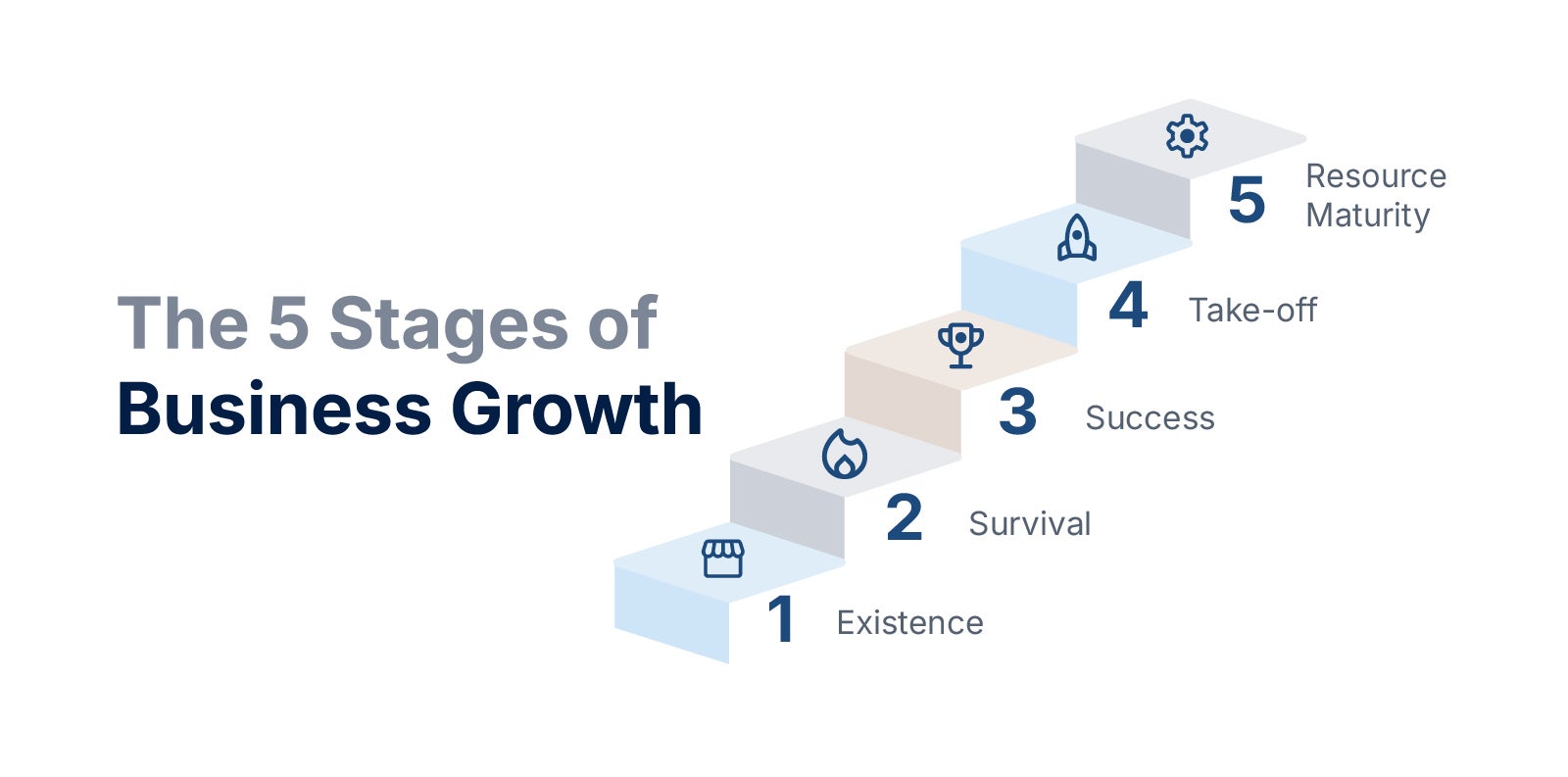
Growing your own flower garden is a popular pastime that requires concentrated focus, plenty of sunshine and water, and continuous care to ensure it blooms to its full potential. Growing your business has similar nurturing requirements, but, unlike a flower garden, it’s not just a fun pastime; it’s how millions of owners and employees make their livings.
Small businesses are called the backbone of the U.S. economy for good reason. According to the U.S. Chamber of Commerce, there are 33.2 million small businesses in the country, making up 99.9% of all U.S. businesses and employing 45.9% of the workforce.
These small businesses operate in a highly competitive and complex landscape, and many of them believe just adding extra hands can help them expand. But increased headcount alone won’t secure successful, continued growth. In fact, if you’re running your business on disconnected software systems that create data silos and hinder communication, adding more employees will put further strain on those systems. What these businesses really need is small business management software that can shoulder their rising complexity without slowing their momentum.
Modern business management software brings together key functions like finance, HR, sales, and operations. This helps leaders make smart decisions using real-time data. Today, we’ll briefly explore the five stages of business growth, define business management software, and examine how the right system supports resounding business success.
The 5 Stages of Business Growth
As small businesses grow, they pass through several stages. In 1983, Neil C. Churchill, professor and leader in innovation and entrepreneurship, and Virginia L. Lewis, senior research associate of the Caruth Institute at Southern Methodist University, introduced the Five Stages of Small Business Growth. This framework was designed to help small business owners and managers assess and solve challenges, anticipate key requirements at different growth stages, evaluate how regulatory requirements will impact their organizations, and diagnose problems unique to small businesses. Here’s a high-level look at each stage.

Stage I: Existence
The Existence Stage is the start-up stage. The owner—who provides the vision, the plan, and the money—wears all the hats, including that of supervisor of all employees. Churchill and Lewis describe it as the phase where the strategy is to “remain alive,” working hard to get customers and to have enough cash to stay afloat with minimal or no systems in place to support these efforts.
Stage II: Survival
The Survival Stage is for the businesses that make it past the start-up stage. Churchill and Lewis write that a Survival Stage company “has enough customers and satisfies them sufficiently with its products or services to keep them.” Though the organization is still operationally simple (e.g., limited employees and supervisors, owner still very hands on), growth happens if the business can manage its cash flow with limited systems development.
Stage III: Success
Those businesses that reach the Success Stage find themselves in a quandary. Do they switch to a maintenance pattern, working to maintain the business at its successful, profitable level so that the owner can “disengage” to pursue other interests? Or should they reinvest the business’s resources into growing even further? Whichever decision is made, extensive work (mostly in the form of budgeting) and strategic planning are required.
Stage IV: Take-Off
In the Take-Off Stage, the goal is to grow rapidly and to finance that growth. The business decentralizes as the owner abdicates some control and delegates responsibilities to key managers. More refined and extensive business management systems are implemented, and managers apply themselves to operational and strategic planning.
Stage V: Resource Maturity
Finally, Churchill and Lewis declare that businesses at the Resource Maturity Stage have “arrived,” but there are still two major concerns: “first, to consolidate and control the financial gains brought on by rapid growth and, second, to retain the advantages of small size, including flexibility of response and the entrepreneurial spirit.” These businesses are now being run by a team (not solely headed by the owner); finances allow for detailed planning; and systems are “extensive and well-developed.”
The Relevance of Business Management Software
According to Churchill and Lewis, businesses may revert to previous growth stages if conditions exist that stop their forward momentum, such as cash flow concerns, an inability to adapt to changing circumstances, and other challenging conditions. So, because growing a business is complicated, regardless of what stage you’re in, it’s important to make plans and implement reliable strategies and tools to prepare for these challenges from the get-go. That way, when your business reaches those challenges, they won’t seem daunting, and you’ll be able to overcome them easily.
To this end, comprehensive business management software systems are the most critical tools to explore. These solutions gather all your business operations into one central technology hub, providing a single source of real-time data truth. They facilitate collaboration among teams and stakeholders, improve customer support, streamline regulatory compliance, automate tedious financial and operational tasks, and much more. But there are many business management systems on the market, so let’s look at the key steps to choosing the solution that best fits you.
Finding and Implementing the Best ERP Solution
1. Follow These Initial Steps
Before choosing the right ERP system, you’ll need to take a few first steps:
- Identify pain points:
- What’s holding your business back? Where do you see inefficient, time-wasting processes? Where are you failing to get the data and insights you need to operate?
- Examine your current tech stack:
- Which of the applications you’re currently using are mission-critical and which need to go? If you have applications you must keep, you’ll need to make sure that the ERP system you choose offers robust integration capabilities with those applications, ensuring seamless connectivity across your tech stack.
- Set a budget before starting your search:
- Go into the process knowing what you are willing and able to spend. To avoid unnecessary (and often unscrupulous) extra charges, choose an ERP software vendor that is upfront about pricing from the start. Look for unlimited-user licensing, where you pay for the resources you use, not for the number of people using the system. This way, the system scales with you, and because all employees can access the system according to their roles and your security protocols, they are empowered with the data they need to do their jobs, in real time. Instead of being isolated by data silos, they can see the big picture and work together more effectively.
- Consider hosting and deployment options:
- How would you like your solution deployed? Would you prefer a fully-managed cloud deployment, where the vendor is responsible for hosting, securing, maintaining, and upgrading the software and hardware? Or would you choose a fully-secure private cloud, where your data is hosted in a cloud entirely devoted to your business? (This option is sometimes chosen by businesses in regulated industries—e.g., pharmaceuticals, food and cosmetics, etc.)
- Think about your industry-specific needs:
- What unique requirements do you need the solution to fill? For instance, construction companies need project management tools. Manufacturers need support for multiple production methods. Distributors need inventory and warehouse management tools. Retailers need omnichannel sales solutions. And so on. If you’re using basic accounting software, you may already have some industry-specific applications bolted onto it. Look for a comprehensive ERP solution that will fill all these industry needs in one system. Again, if any of the third-party software you’re using is mission-critical to your business, the ERP solution should also be able to seamlessly integrate with that software, bringing it under the same comprehensive, one-solution umbrella.
Once you’ve followed these steps and are beginning your ERP research, examine each option’s usability ratings to see what real-world customers have to say about it. Check to see if the system’s security protocols are transparent and top notch. Evaluate the vendor’s product roadmap. Are they focused on continual innovation, or are they just treading water? And, finally, make sure that the vendor you’re examining will be a partner to your business, not a predator.
“Predators are short-term focused and all about the checkbook,” says Acumatica’s VP of Product Marketing, David De Rego, referring to research by analyst Brian Sommer. “They set traps and use confusing, voluminous contracts. Partners are committed to a long-term relationship. They align their goals with the customers’ goals and continuously improve their products.”
Overall, you’re looking for a vendor with a proven customer-and-innovation-first mindset.
2. Ensure the Software’s Capabilities Align with Growth Stages
Growing small businesses require business management software that can scale and flex with the increased complexity each stage of growth brings. A comprehensive ERP solution (as opposed to standalone, disconnected pieces of software) includes advanced features designed to support small businesses at every stage of growth, from cash management to workflow automation.
For example, if your business is in the Survival Stage, your ERP solution should have cash management tools that help manage daily transactions, cash balances, funds transfers, and bank account reconciliations in a centralized system. For the Success Stage, an ERP solution should have workflow automation capabilities that ensure team members are focusing on business-enhancing activities rather than manual tasks that steal their valuable time and energy. And for the Take-Off Stage, advanced business intelligence and analytics with AI are vital, equipping businesses with the insights they need to make data-driven, strategic decisions that will help them navigate the challenges that come with skyrocketing growth.
These and other features must be advanced enough to handle evolving requirements but not so advanced that people can’t easily use them.
3. Successfully Implement the Right Solution and Manage Change
After finding the best ERP solution for your business, you’ll implement the system with the help of the ERP vendor or a trusted ERP implementation partner. The implementation process varies depending on the solution, but the standard steps include:
- Getting leadership, IT, and employee buy-in so that, when the technology changeover happens, team members will be ready and willing to use it.
- Installing the solution according to the chosen hosting option.
- Migrating data from the old system to the new.
- Training all team members.
- Testing and validating the ERP system.
- Going live, which can be done all at once or scheduled in different phases. (You can also use the old and new systems together for a while, like training wheels for your business processes.)
- Ongoing feedback and improvements, so you can make adjustments as you grow.
Sustainable Growth with the Right ERP Solution
Small businesses can expect to hit specific stages within the growth journey. If they implement intuitive, affordable, and innovative business management software, like Acumatica, they’ll have the tools, resources, and data they need to easily and successfully make it to their Resource Maturity Stage.
Andy Hodgson, Chief Executive Officer at Envent Engineering, puts it this way: “Our adoption of Acumatica was concurrent with our expansion and growth. I would be the first to say that it probably made a lot of the growth possible. If we had had all these orders come in without having a better data management system, we probably would have been a train wreck. What we have is near instantaneous data reflected in real time….”
To learn more about switching to new, scalable software, read our free eBook “Leading Through Change: Successfully Transitioning from Basic Accounting Software to an ERP System.”
 Canada (English)
Canada (English)
 Colombia
Colombia
 Caribbean and Puerto Rico
Caribbean and Puerto Rico
 Ecuador
Ecuador
 India
India
 Indonesia
Indonesia
 Ireland
Ireland
 Malaysia
Malaysia
 Mexico
Mexico
 Panama
Panama
 Peru
Peru
 Philippines
Philippines
 Singapore
Singapore
 South Africa
South Africa
 Sri Lanka
Sri Lanka
 Thailand
Thailand
 United Kingdom
United Kingdom
 United States
United States








